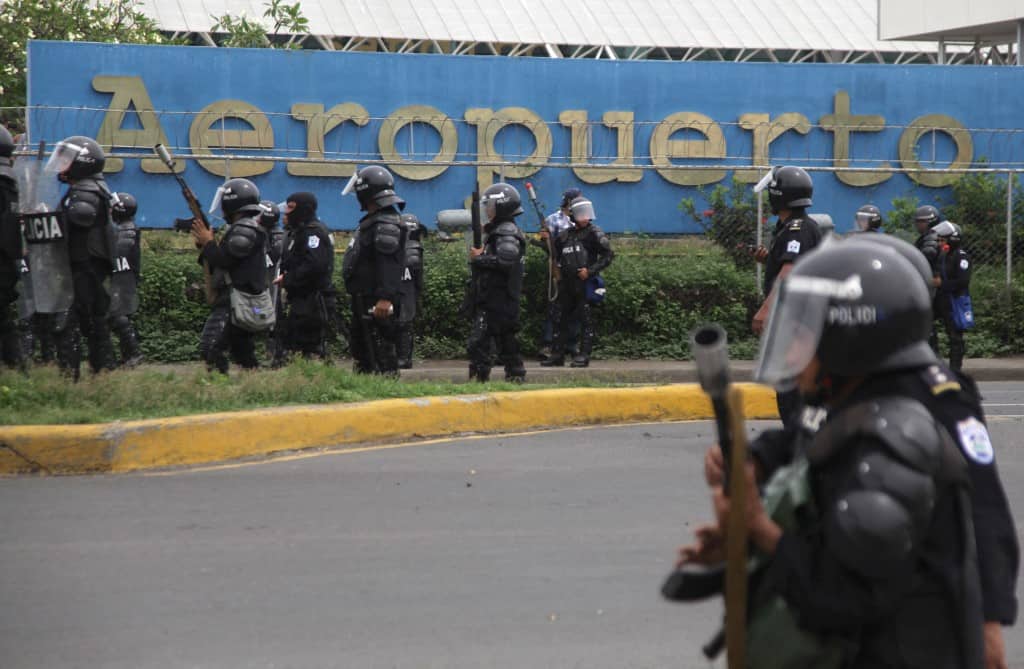The recent surge in Cuban and Haitian migration to the United States via Nicaragua has led to an increase in subleased flights, featuring special routes and exorbitant prices. This situation has drawn the attention of Washington, resulting in sanctions amidst a spike in migrant flow.
Irma Pérez, a 28-year-old Cuban, arrived with her family at Managua’s international airport on October 9 on a charter flight from her hometown of Holguín, in eastern Cuba. “The flight was with Vivas (Viva Aerobús), with a 45-minute layover in Cancun. We never left the plane, and from there, we went to Managua,” she said via Facebook in early November, speaking from Mexico City, where she arrived with her husband and one-year-old child, guided by a coyote through Central America.
Many Cubans reported traveling on Viva Aerobus charter flights, arranged by small travel agencies selling tickets. However, AFP’s inquiry to the airline via email went unanswered, and no itineraries from Cuban cities to Managua were listed on their online sales page.
Irma paid $1,250 for her ticket, the same for her husband, and $350 for her one-year-old child, not including the $2,100 paid to the coyote. “Using charter flights to transport migrants is a relatively new phenomenon,” said Manuel Orozco, director of Migration at Inter-American Dialogue, a think tank based in Washington.
Following Nicaragua’s removal of visa requirements for Cubans in November 2021, over 421,000 Cubans have irregularly reached the U.S. border, many via this Central American country, according to U.S. official figures.
In early 2022, Panama and Costa Rica imposed transit visas on Cubans due to the high influx of migrants stopping at their airports en route to Managua.
This situation has led to a proliferation of charter flights to Nicaragua’s capital. According to a report by Inter-American Dialogue, an average of 50 charter flights traveled from Havana to Managua monthly from January to October 2023, while flights from Port-au-Prince increased significantly during the same period.
Orozco, the report’s author, believes that airlines and Nicaraguan aviation authorities have made a mutually beneficial economic calculation behind this trend. Smaller airlines have also capitalized on this growing market.
A 37-year-old Cuban accountant recounted paying $1,800 in October to fly with Aruba Airlines, which offers tickets via a WhatsApp number, flying from Havana with a stopover on this small Dutch Caribbean island.
Most of these migrants, including Irma, are heading to the United States. Ticket offers are abundant on Facebook, with various options including charter and regular flights.
Brian Nichols, U.S. Assistant Secretary of State, expressed concern earlier this month over the dramatic increase in these flights. Consequently, Washington decided to restrict visas for owners, executives, and senior officials of companies operating these flights.
Cuba’s Deputy Foreign Minister, Carlos Fernández de Cossío, stated last week after a meeting with U.S. officials in Havana that the situation had changed since August-October.
Mexico closed this route at the end of October by imposing transit visas for Cubans at its airports.
In Nicaragua, taxi drivers and hoteliers have felt the impact of this situation. A small hotel owner in the tourist city of Granada said that about 40% of total reservations have been fake in recent months, as migrants need to show a Nicaraguan address to customs authorities.
“A few weeks ago, there were 22 to 23 daily migrant flights; today, there are six,” confirms a Managua taxi driver who regularly checks international arrivals on the airport’s website.
The irregular migration of Cubans and Haitians to the United States had decreased earlier in the year due to the Parole program, implemented in January by the Biden administration to facilitate legal migration for citizens of four countries (Cuba, Haiti, Nicaragua, and Venezuela).
Under this program, between January and October, about 55,000 Cubans and 107,000 Haitians flew directly to the United States. However, during the same period, approximately 108,000 Cubans and 165,000 Haitians arrived via illegal routes, according to official figures.
“The Parole program does not meet the migratory demand of the number of people intending to migrate,” estimates the expert from Inter-American Dialogue.

